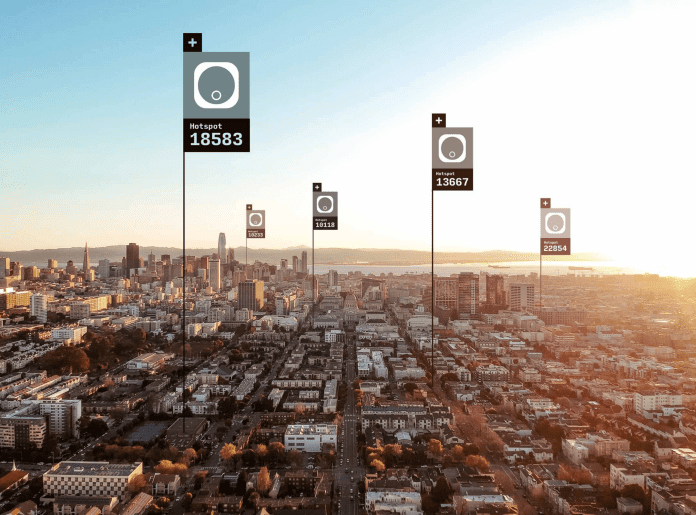Blockchain-based LoRaWAN network operator and hotspot maker Helium has expanded to more than 1,000 cities in North America, and started rolling out in Europe, and announced a new deals with LoRa-maker Semtech.
Helium presents itself as the ‘people’s network’ and the ‘first peer-to-peer wireless network’. Its calling card is that it offers a blockchain platform as a ‘cryptographic notary’ for the transfer of data across its LoRaWAN network.
The combination of LoRaWAN and blockchain is called ‘LongFi’, in its own marketing parlance. It sells LoRaWAN hotspots, which can be integrated into its LoRaWAN network, and pay owners for carrying data, adding blocks to the blockchain, and performing other tasks.
Transaction data including connectivity time and location is stamped on the blockchain, and is immutable and inspectable, it claims. Network users pay based on network usage, without needing to deploy gateways or network servers.
Earlier this year, Helium announced a partnership with Semtech to integrate the LoRaWAN protocol into its LongFi networking architecture. The pair have ‘expanded [their] collaboration”, they said, without saying exactly how, except that Helium has sold over 10,000 hotspots in the six months since they joined forces.
They claimed the combination of LoRaWAN and blockchain has simplified and accelerated rollout of IoT coverage in North America, and will do the same in Europe. The Helium model has animated 8,000-odd developers, it claimed, including GPS hardware developer Digital Matter, IoT monitoring firm Conserv, security software and hardware firm Smart Mimic, agri-tech company Agulus.
Helium also has a new deal with LoRa device maker Cal-Chip Connected Devices, a division of distributor Cal-Chip Electronics, to distribute Helium-compatible LoRa-based solutions, including third-party gateways and sensors, for use throughout North America and Europe.
Amir Haleem, chief executive at Helium, said: “Helium has seen incredible growth on its network as a result of its partnership with Semtech and the introduction of the Helium Blockchain as an incentive model to the LoRaWAN community. We hope to foster the growth of the ecosystem and make new technologies and solutions available to developers, industries and ultimately, consumers.”
Marc Pegulu, vice president of IoT product marketing at Semtech, said: “Helium’s unique business model enables ownership and operation of personal IoT networks, promoting the development of new and innovative LoRa-based applications which increase the global adoption of the LoRaWAN protocol and accelerate solution time to market.”
T. J. Rancour, president at Cal-Chip Connected Cevices, said: “Semtech delivers the technology, Helium delivers the network and Cal-Chip delivers the devices. Cal-Chip has the infrastructure and technical ‘know-how’ to present solutions in an easy-to-understand manner, leading to exceptional customer experience.”
Meanwhile, LoRaWAN operator National Narrowband Network Co (NNNCo) has said battery-powered GPS tracking devices from IoT hardware developer Digital Matter are now certified and available for use on its network in Australia.
Rob Zagarella, chief executive at NNNCo, said: “Digital Matter’s asset tracking devices are certified and ready to deploy at scale for asset tracking and logistics applications on our enterprise-grade LoRaWAN networks. This is significant for businesses who require affordable and scalable asset tracking solutions, particularly in remote regions across Australia where reliable and affordable connectivity is a substantial problem.”
Digital Matter’s tracking devices provide location and movement history data for protection and recovery of assets, such as pallets, containers, equipment, vehicles, trailers, bins, and more.
Ken Everett, chief executive and founder at Digital Matter, said: “LoRaWAN enables endless applications for asset tracking. Thanks to LoRaWAN’s low energy operation, we are able to extend the battery-life of our asset tracking devices even further, with devices lasting up to 5 years on a single set of batteries.”

